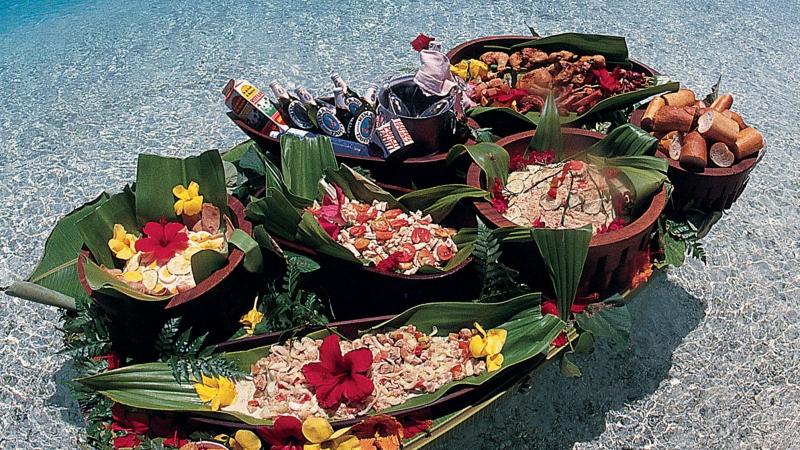
African & Middle Eastern Cuisine
by James Drakeford
Going on holiday to a new continent can be very exciting and part of that excitement stems from sampling the different cultures and customs that it brings. Even when you are staying at an all inclusive hotel it is still part of the holiday experience to get out there and try the local foods. As a result, we have decided to serve up a platter dish offering some examples of fine restaurants and mouth watering cuisine found across both Africa and the Middle East.
South Africa
South Africa is most famous for their Biltong – a cured meat similar to a thicker version of beef jerky – but while this can be found in supermarkets and street vendors around the country, it is nothing more than a popular snack in between meals. For a real account of South African cuisine you should venture to Oudtshoorn, in the Klein-Karoo region of the Southern Cape.
South Africa accounts for 80% of ostrich products worldwide and is currently home to 65% of the world’s ostrich population. Having farmed ostriches since 1864, Oudtshoorn is considered to be the ostrich capital of the world. Many restaurants in this area such as HEADLINES and La Dolce Vita specialise in this locally produced delicacy.
Senegal
Senegalese food is a rich blend of fresh, local ingredients and multicultural flavours from France, Portugal, Portugal, the Middle East, the Americas and even Vietnam. Because Senegal borders the Atlantic Ocean, fish is an important staple resonated by the fact the national dish is Thiebou jen – a spicy stuffed fish simmered with vegetables seasoned with tomato paste, tamarind and habanero pepper.
Make the most of the fresh seafood on offer in Senegal by visiting the port city of Dakar. There are rows and rows of restaurants to choose from but we highly recommend visiting Terrou-Bi. Located right on the sea, this chic garden restaurant serves highly recommended French cuisine mixed with subtle flavours of local produce. This is also the destination of choice for Dakar’s monied classes.
Kenya
Like many other East African countries the carte du jour in Kenya is reflective of the society and culture. In the inland savannah, cattle, sheep and goats were traditionally regarded as a form of currency and a store of wealth and as such they have not generally been consumed as food. Although meat based dishes are appearing on menus and in recipes more and more, the popular dishes are still heavily based around a vegetarian diet.
While you are in Kenya make sure you try Ugali. This starchy, polenta-like side dish is relatively inexpensive making it a popular choice throughout East Africa. Although it is popular in neighbouring nations, we chose Kenya due to their ubiquitous pairing with Sukuma wiki. It may be a simple dish of Kenyan greens simmered with tomatoes, but this nutritious and tasty meal will give you a real flavour of East Africa.
Afghanistan
Just like Japan (sushi) and Spain (paella) have their own variations of rice, Afghanistan also have their own take. In this country rice dishes are the ‘king’ of all foods and a lot of time and effort is placed into creating their rice, as they are considered the best part of any meal. The famous Chalow is a long grain white rice parboiled, drained and baked in an oven with oil, butter and salt to a fluffy completion while the national dish Palao is cooked in the same manner, but with either meat and stock qorma, herbs, or a combination of the two blended in before the baking process.
If you are not overly fond of rice then don’t panic. Just because it is the most popular produce doesn’t mean it is the exclusive cuisine of Afghanistan. Another popular offering that you will find in this region is the Afghan kebab which can be found in most restaurants and outdoor vendor stalls throughout the country. The most popular meat used is lamb but the better restaurants tend to offer chicken or kofta too. When you think of Middle Eastern food Afghanistan may not be one of the first countries that spring to mind. Let go of your inhibitions and trust your taste buds.
Lebanon
Middle Eastern cuisine gained a global profile in the 1990s with the heart-healthy Mediterranean diet and now the likes of Lebanese food can be found in supermarkets and restaurants worldwide.
Lebanese food bears quite a strong similarity to Moroccan food along with the other Arabic countries as opposed to Persian nations. They are often based around lamb or chick peas and also share a lot of favourite dishes such as falafel and accompaniments such as hummus. Another similarity is their blend of herbs and spices which they use to season their dishes with. Allspice, cinnamon and sumac are among the hallmarks of Lebanese cuisine along with a greater reliance on herbs like parsley, mint and Zatar (a wild thyme herb blend).
Share this article:




















